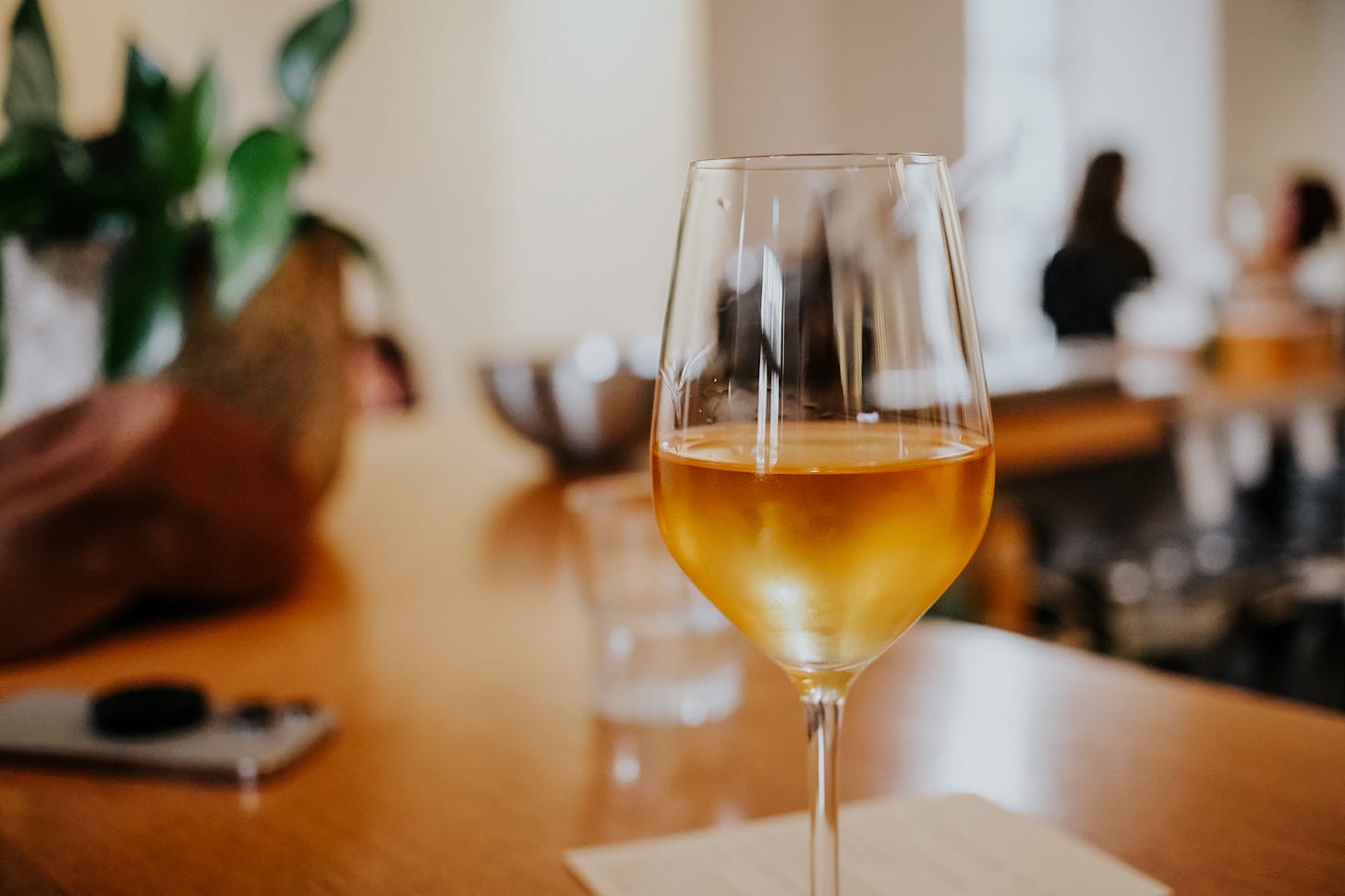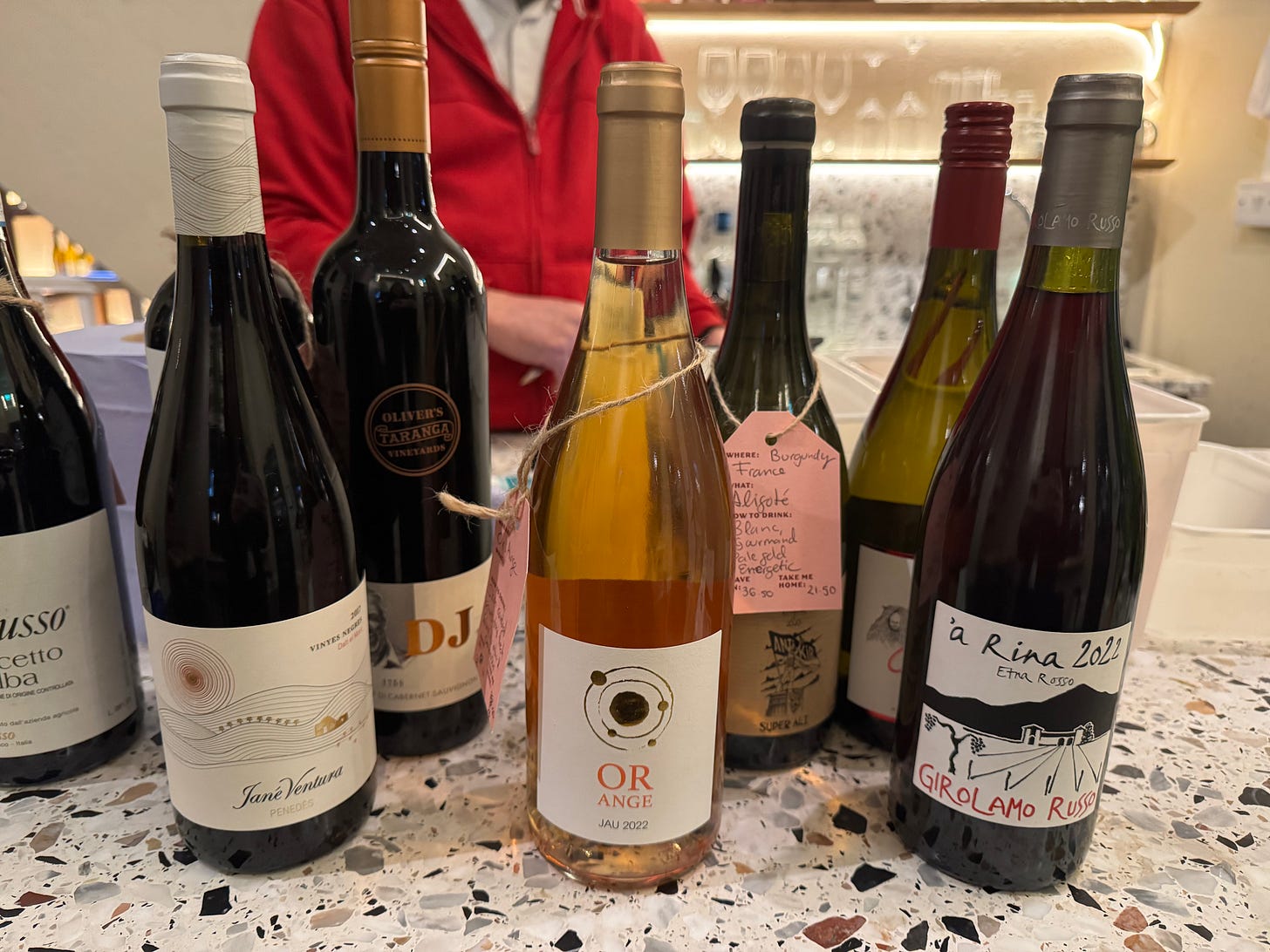If you’ve been to a wine bar or an up-and-coming restaurant in the past five years or so, you might have come across orange wine on the menu. It likely has a small section on its own, or it was listed with the rosé options, or maybe under a section called “skin contact.” They’re becoming increasingly popular in metropolitan cities, and are starting to make an appearance in suburban and rural areas as well.
One of the most common questions that people tend to have when it comes to orange wine is wondering if it is made with oranges. Don’t worry, it’s a question that does make sense; there’s such a thing as pineapple wine and blueberry wine, so why can’t a wine be made from oranges as well?
In this case, it’s not. Orange wine is indeed made with grapes, and it can easily be explained like this: orange wine is a white wine made like a red wine.
This is where the “WTF” comes in. Let’s break it down.
How orange wine is made
First, it’s important to know how wine is made in general. To make white wine, the skins have to be removed before fermentation in order to give it that clear, bright, yellow color. This also makes the wine aromatic and fresh. For red wines, the skins are kept on the grapes, which gives the wine its color and tannins.
So essentially, for an orange wine, the white grapes have the skin left on them, meaning the wine had “skin contact” for a certain allotted amount of time during fermentation to give the wine that orange color and tannins before it is filtered and bottled.
Now orange wines can have different degrees of skin contact, depending on the type of wine the winemaker wants to produce. Some white wines will actually have some skin contact before bottled, but will still be labeled a white wine. Some orange wines will have a very small period of skin contact, but will still be labeled as orange wines. It can get a little confusing, but essentially, if you’re ordering an orange wines on a list, you’re going to get a class of orange-colored vino that has drying tannins and a hint (or a lot) of bitterness compared to an aromatic or buttery white.
Do all orange wines taste the same?
Some experts say yes. Orange wine has this bitterness from the skin (and possibly stems that were left in the tank) that tastes much different than a white wine. A common taste that you’ll get from an orange wine is dried herbs — thyme is one that is mentioned quite often.
However, as someone who loves orange wine and tends to order it often, I believe orange wines can taste very different from one another, especially when you consider the grape that is used. An orange wines made with Gewurtztraminer form Alsace will have that bitterness, but it still has those lovely roses and lychee aromas from the grapes mixed in, giving it this sweet-bitter finish. Plus, the amount of skin contact the wine has been through will also determine the taste. Some might have more than others!
Honestly, I think the more you drink orange wine, the more you’ll be able to tell the differences between different styles you’ll come across.
The wine of the week is Chateau de Jau ‘Or-Ange’ from the Roussillon region in France. It’s made with a blend of Chardonnay, Viognier, and Gewurtztraminer grapes. I enjoyed this wine over at Tiny Wine Bar / Crudo Cevicheria Fitzrovia in London.
My tasting notes
Appearance: Clear, bright, pale, with an orange-gold color
Nose: High intensity, with notes of candied citrusy, herbs, lychee, and honey
Palate: Dry, high acidity, full bodied, medium to high alcohol, no oak, and long length
Final conclusion
Aromatic and delightfully surprising with notes of candied orange, lychee, and honey.






Love orange wine!